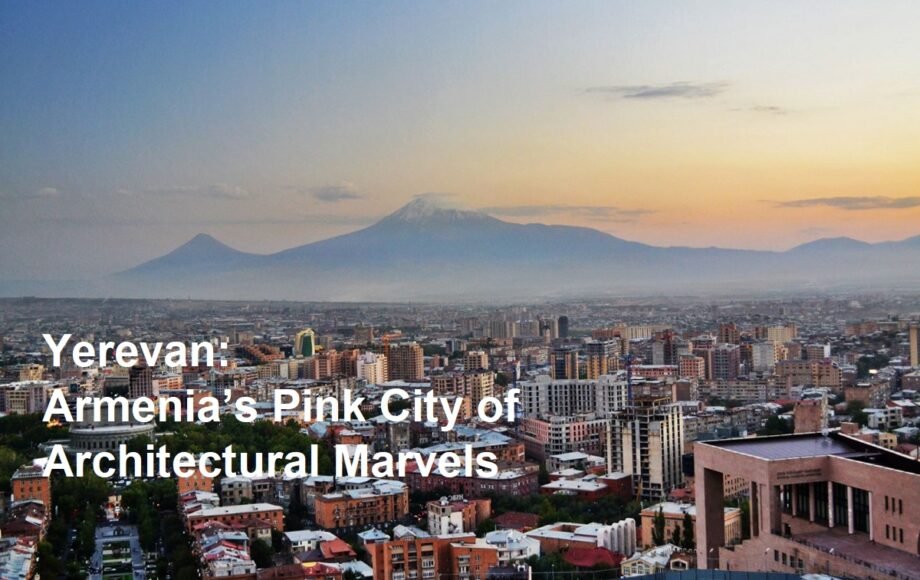Introduction
Yerevan, one of the world’s oldest continuously inhabited cities, dazzles visitors with a symphony of pink tuff stone architecture, Soviet-era monuments, and contemporary designs. Founded in 782 BCE, Armenia’s capital seamlessly blends 3,000 years of history with vibrant modern energy. This guide explores Yerevan’s unmissable architectural treasures and the stories they tell.
The Pink Heart of Armenia: Why Yerevan’s Architecture Captivates
Yerevan’s nickname, “The Pink City,” stems from its iconic volcanic tuff stone buildings, which glow rose-gold at sunrise and sunset. Architect Alexander Tamanyan’s 1924 masterplan reshaped the city into a radial layout with grand avenues, parks, and monumental squares.
Key Architectural Styles to Discover:
1. Soviet Modernism with Armenian Soul
- Republic Square: A neoclassical marvel ringed by pink tuff buildings housing government offices and the National Museum. The dancing fountains here are a cultural hub after dark.
- Cascade Complex: A colossal limestone stairway (572 steps!) adorned with modern sculptures and gardens. Its interior hosts the Cafesjian Museum of Contemporary Art.
2. Ancient Foundations
- Erebuni Fortress: The 8th-century BCE birthplace of Yerevan. Cuneiform inscriptions here declare, “By the greatness of the god Khaldi, Argishti built this mighty fortress.”
- Blue Mosque: A restored 18th-century Persian jewel with turquoise domes and tranquil gardens.
3. Contemporary Vision
- Saint Gregory the Illuminator Cathedral: Completed in 2001, this is the largest Armenian Apostolic church in the world. Its minimalist design contrasts with ornate khachkars (cross-stones).
- Northern Avenue: A sleek pedestrian boulevard linking Republic Square to the Opera House, lined with glass-fronted boutiques and cafes.
Architectural Icons You Can’t Miss
| Site | Highlight | Pro Tip |
| Yerevan Opera House | Twin auditoriums under green domes; Tamanyan’s masterpiece | Attend a ballet for $10–$30 tickets |
| Matenadaran Library | Futuristic facade guarding 17,000+ ancient manuscripts | Join a guided tour to see illuminated gospels |
| Vernissage Market | Open-air gallery of Armenian crafts under Soviet-era arches | Bargain for handmade carpets & obsidian art |
The Human Stories Behind the Stones
- Survival & Identity: Despite earthquakes and Soviet rule, Yerevan’s architecture preserved Armenian culture. The Genocide Memorial(Tsitsernakaberd) uses stark concrete pillars and an eternal flame to honor resilience.
- Urban Revival: Post-independence (1991), architects like Jim Torosyan reimagined Soviet spaces. The Cascade Complex, once a 1970s unfinished project, is now a symbol of Yerevan’s creative rebirth.
- Community Spaces: Locals gather in Lover’s Park(redesigned in 2008) for its Japanese-inspired gardens and open-air libraries.
Sustainable Tourism & Cultural Respect
Yerevan’s heritage faces challenges:
- Over-tourism: Historic districts like Kond need visitor limits.
- Earthquake risks: Many 19th-century buildings require reinforcement.
Support responsibly:
✅ Hire local guides(e.g., Yerevan Walking Tours).
✅ Buy from artisan cooperatives like Teryan Cultural Centre.
✅ Respect church dress codes (cover shoulders/knees).
Conclusion
Yerevan’s architecture is a dialogue across millennia—from Urartian fortresses to avant-garde galleries. As you wander its pink-hued streets, you’ll feel the pulse of a city that has weathered empires while fiercely nurturing its identity. Whether sipping Armenian coffee in a courtyard café or tracing khachkars at the History Museum, Yerevan doesn’t just display beauty; it tells a story of endurance, artistry, and hope.







